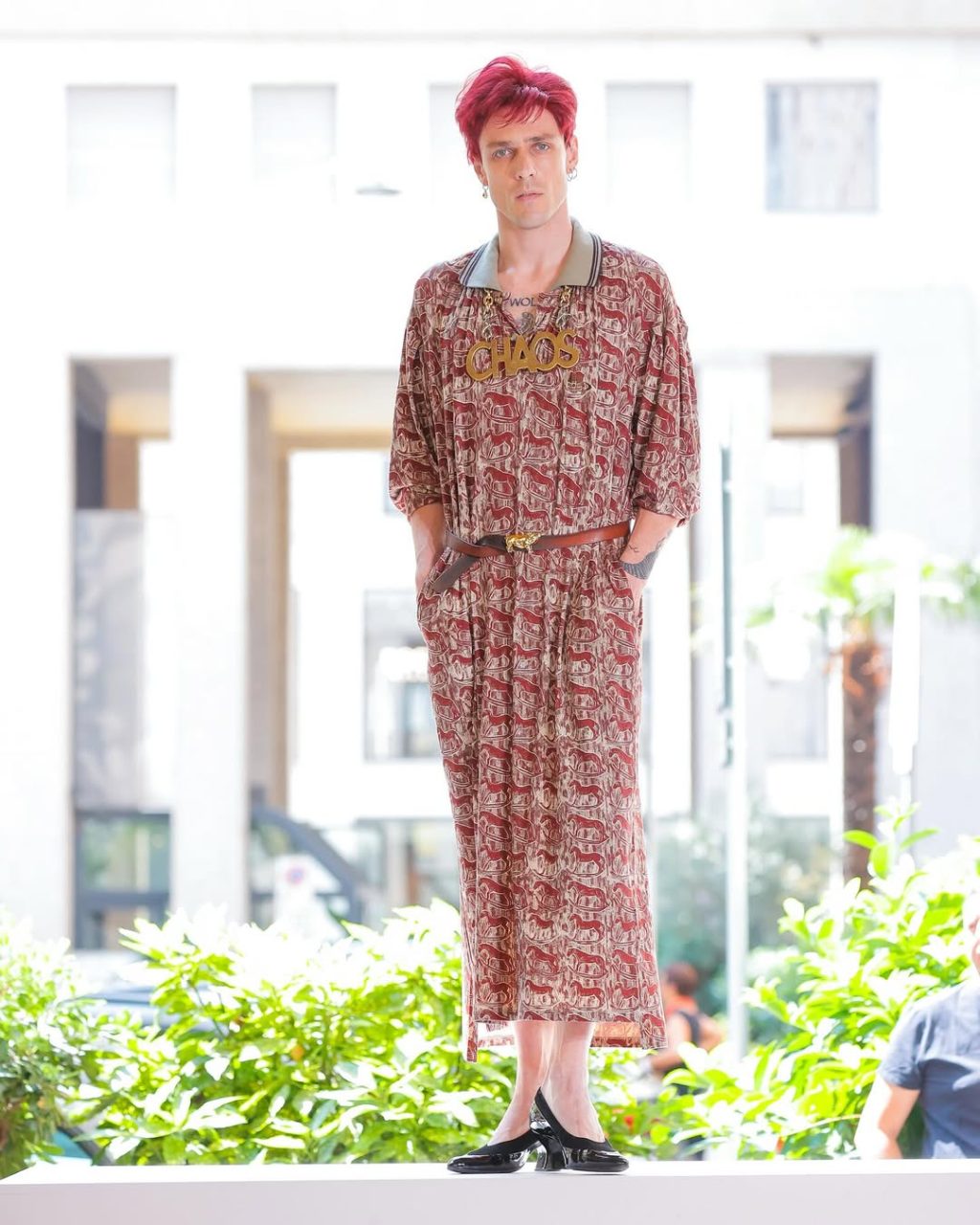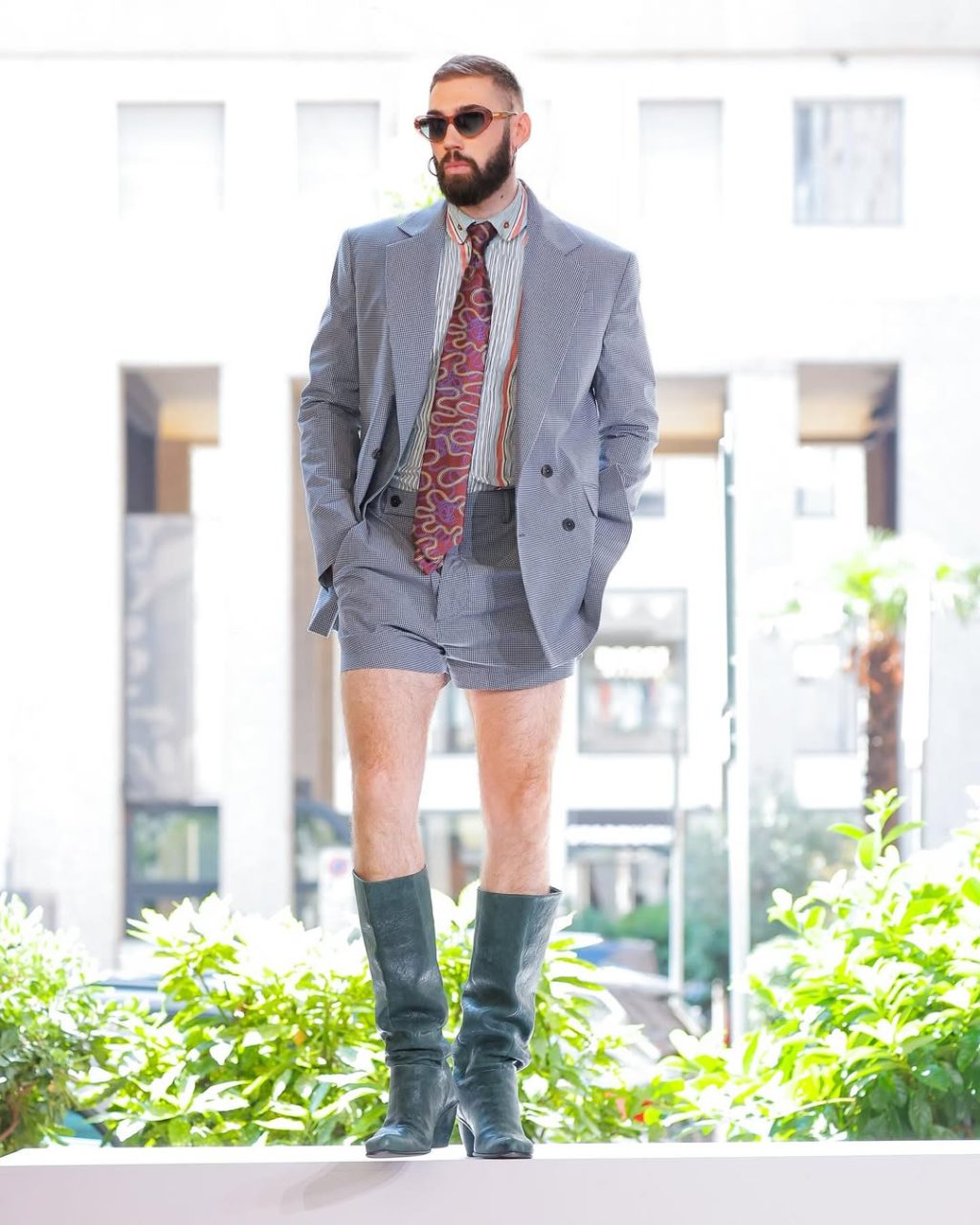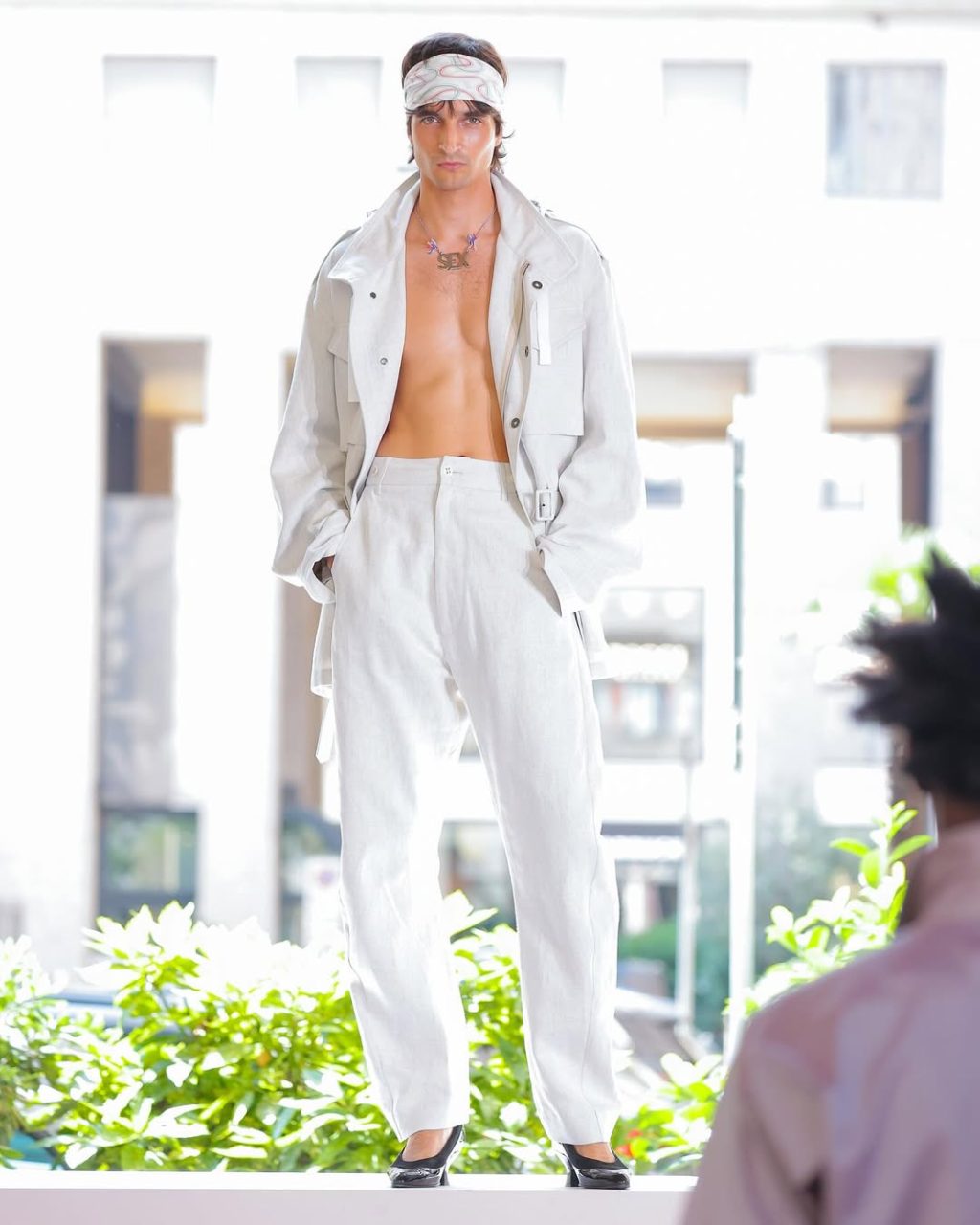The Café Society of San Babila: Vivienne Westwood SS26 by Andreas Kronthaler
If you’re still expecting a traditional runway show from Andreas Kronthaler, you’ve missed the point. This season, the Vivienne Westwood creative director bypassed the traditional catwalk altogether and dropped his SS26 collection right into the chaos of San Babila. Tourists, pigeons, paparazzi, and Milanese grandmothers sipping coffee became accidental extras in a spectacle that felt part ritual, part riot, and entirely Westwood.
Picture it: satin corsets clinging to bare chests, floral tabards layered over crushed velvet, and leopard trenches grazing café tabletops. All of it unfolded not in the polished stillness of an indoor venue, but out in the open, under the ruthless Milan sun. No backstage. No backstage passes. Just street as stage, and Kronthaler’s cast of rebels drifting across it like a wayward troupe on a mission.
After more than a decade away from Milan’s menswear calendar, Kronthaler’s return wasn’t a nod to nostalgia — it was a full-blown resurrection. You didn’t just see Vivienne’s spirit in the clothes; you felt her in the air. This wasn’t a tribute. It was a continuation.
The Gladiator boots stomped over cobblestones like ancient relics revived. Floral drapery fell like curtains between gender norms. And everywhere you looked, there was lace—knotted, twisted, tugged into place over trousers and skin. Everything Kronthaler sent down that makeshift catwalk seemed both sacred and stolen. Like the models had raided a historical archive mid-metamorphosis and never looked back.
Gender? Optional. Convention? Uninterested. These were clothes for people who want to feel like someone else for the day—or for themselves, only louder. There were tabards that resembled altar cloths, python heels like holy weapons, corset dresses in brothel pink, and a bathrobe so richly printed it could only be worn as rebellion.
Kronthaler finds it exciting when someone wears something that feels like it shouldn’t be theirs. The idea of echoed through the entire show like a manifesto. It wasn’t about fitting into fashion’s boxes — it was about undoing the very idea of them. The models looked like they had borrowed drama from another century, and wore it with full commitment. Theatricality, in this context, wasn’t artifice. It was power.
At one point, the bells of a nearby church rang out — mid-show — overpowering the soundtrack. Nobody flinched. If anything, it added to the spell. It felt holy. Like something was being conjured, not just shown.
Because that’s what Kronthaler understands better than most: fashion isn’t just about clothes. It’s about presence. It’s about disruption. It’s about walking into a space and forcing it to make room for you.
Vivienne Westwood always knew that. She didn’t just dress punks — she politicized beauty. She made elegance dangerous. And Kronthaler, her longtime partner in both life and creation, isn’t letting that legacy become a museum piece. He’s still remixing it, restyling it, reactivating it — even if it means turning an Italian piazza into a fever dream runway.
In the end, “The Café Society of San Babila” becomes a public declaration: that fashion belongs everywhere, especially where you least expect it. On the street. On your body. On fire.


